TELTONIKA Dual SIM 4G LTE Cat.4 Industrial Cellular Router (RUT956)
10 in stock
RUT956 is an industrial router that combines dual-SIM cellular 4G LTE, Wi-Fi, and wired connectivity options and additionally offers GNSS capabilities.
Automatic WAN failover ensures solution uptime even if the primary connection is lost.
Serial communication interfaces enable integrating more varied devices to the solution ecosystem, even legacy equipment.
Digital and analog Inputs/Outputs with advanced RutOS software features facilitate equipment control, automation, and event notifications.
Packed with advanced industrial software features, including Modbus, SNMP, TR-069, NTRIP, MQTT, and multiple VPNs.
SKU:RUT956
$259.87
10 in stock
CompareRUT956 is an industrial router that combines dual-SIM cellular 4G LTE, Wi-Fi, and wired connectivity options and additionally offers GNSS capabilities.
Automatic WAN failover ensures solution uptime even if the primary connection is lost.
Serial communication interfaces enable integrating more varied devices to the solution ecosystem, even legacy equipment.
Digital and analog Inputs/Outputs with advanced RutOS software features facilitate equipment control, automation, and event notifications.
Packed with advanced industrial software features, including Modbus, SNMP, TR-069, NTRIP, MQTT, and multiple VPNs.
| Brands | Teltonika |
|---|
MOBILE
Mobile module: 4G (LTE) – Cat 4 up to 150 Mbps, 3G – Up to 42 Mbps, 2G – Up to 236.8 kbps
SIM switch: 2 SIM cards, auto-switch cases: weak signal, data limit, SMS limit, roaming, no network, network denied, data connection fail, SIM idle protection
Status: Signal strength (RSSI), SINR, RSRP, RSRQ, EC/IO, RSCP, Bytes sent/received, connected band, IMSI, ICCID
SMS: SMS status, SMS configuration, send/read SMS via HTTP POST/GET, EMAIL to SMS, SMS to EMAIL, SMS to HTTP, SMS to SMS, scheduled SMS, SMS autoreply, SMPP
USSD: Supports sending and reading Unstructured Supplementary Service Data messages
Black/White list: Operator black/white list
Multiple PDN: Possibility to use different PDNs for multiple network access and services
Band management: Band lock, Used band status display
APN: Auto APN
Bridge: Direct connection (bridge) between mobile ISP and device on LAN
Passthrough: Router assigns its mobile WAN IP address to another device on LAN
WIRELESS
Wireless mode: IEEE 802.11b/g/n, Access Point (AP), Station (STA)
WiFi security: WPA2-Enterprise – PEAP, WPA2-PSK, WEP, WPA-EAP, WPA-PSK; AES-CCMP, TKIP, Auto Cipher modes, client separation
SSID/ESSID: SSID stealth mode and access control based on MAC address
WiFi users: Up to 100 simultaneous connections
Wireless Hotspot: Captive portal (Hotspot), internal/external Radius server, built in customizable landing page
ETHERNET
WAN: 1 x WAN port 10/100 Mbps, compliance IEEE 802.3, IEEE 802.3u standards, supports auto MDI/MDIX
LAN: 3 x LAN ports, 10/100 Mbps, compliance with IEEE 802.3, IEEE 802.3u standards, supports auto MDI/MDIX
NETWORK
Routing: Static routing, Dynamic routing (BGP, OSPF v2, RIP v1/v2, NHRP)
Network protocols: TCP, UDP, IPv4, IPv6, ICMP, NTP, DNS, HTTP, HTTPS, FTP, SMTP, SSL v3, TLS, ARP, VRRP, PPP, PPPoE, UPNP, SSH, DHCP, Telnet, SMPP, SMNP, MQTT, Wake On Lan (WOL)
VoIP passthrough support: H.323 and SIP-alg protocol NAT helpers, allowing proper routing of VoIP packets
Connection monitoring: Ping Reboot, Wget Reboot, Periodic Reboot, LCP and ICMP for link inspection
Firewall: Port forward, traffic rules, custom rules
DHCP: Static and dynamic IP allocation, DHCP Relay, Relayd
QoS / Smart Queue Management (SQM): Traffic priority queuing by source/destination, service, protocol or port, WMM, 802.11e
DDNS: Supported >25 service providers, others can be configured manually
Network backup: WiFi WAN, Mobile, VRRP, Wired options, each of which can be used as an automatic Failover
Load balancing: Balance Internet traffic over multiple WAN connections
Hotspot: Internal/external Radius server, captive portal, built in customizable landing page
SSHFS: Possibility to mount remote file system via SSH protocol
SECURITY
Authentication: Pre-shared key, digital certificates, X.509 certificates
Firewall: Pre-configured firewall rules can be enabled via WebUI, unlimited firewall configuration via CLI; DMZ; NAT; NAT-T
Attack prevention: DDOS prevention (SYN flood protection, SSH attack prevention, HTTP/HTTPS attack prevention), port scan prevention (SYN-FIN, SYN-RST, X-mas, NULL flags, FIN scan attacks)
VLAN: Port and tag based VLAN separation
Mobile quota control: Custom data limits for SIM card
WEB filter: Blacklist for blocking out unwanted websites, Whitelist for specifying allowed sites only
Access control: Flexible access control of TCP, UDP, ICMP packets, MAC address filter
VPN
OpenVPN: Multiple clients and a server can run simultaneously, 12 encryption methods
OpenVPN Encryption: DES-CBC, RC2-CBC, DES-EDE-CBC, DES-EDE3-CBC, DESX-CBC, BF-CBC, RC2-40-CBC, CAST5-CBC, RC2-64-CBC, AES-128-CBC, AES-192-CBC, AES-256-CBC
IPsec: IKEv1, IKEv2, with 5 encryption methods for IPsec (DES, 3DES, AES128, AES192, AES256)
GRE: GRE tunnel
PPTP, L2TP: Client/Server instances can run simultaneously, L2TPv3 support
Stunnel: Proxy designed to add TLS encryption functionality to existing clients and servers without any changes in the program’s code
DMVPN: Method of building scalable IPsec VPNs
SSTP: SSTP client instance support
ZeroTier: ZeroTier VPN client support
WireGuard: WireGuard VPN client and server support
MODBUS TCP SLAVE
ID range: Respond to one ID in range [1;255] or any
Allow Remote Access: Allow access through WAN
Custom registers: MODBUS TCP custom register block requests, which read/write to a file inside the router, and can be used to extend MODBUS TCP Slave functionality
MODBUS TCP MASTER
Supported functions: 01, 02, 03, 04, 05, 06, 15, 16
Supported data formats: 8 bit: INT, UINT; 16 bit: INT, UINT (MSB or LSB first); 32 bit: float, INT, UINT (ABCD (big-endian), DCBA (little-endian), CDAB, BADC)
Supported baud rates: From 300 to 115200
Supported functions: 01, 02, 03, 04, 05, 06, 15, 16
Supported data formats: 8 bit: INT, UINT; 16 bit: INT, UINT (MSB or LSB first); 32 bit: float, INT, UINT (ABCD (big-endian), DCBA (little-endian), CDAB, BADC), HEX, ASCII
Number of data bits: From 5 to 8
Number of stop bits: 1 or 2
Parity: None, Even, Odd
Flow: None, RTS/CTS, Xon/Xoff
Duplex: Full duplex
Supported baud rates: From 300 to 300000
Supported functions: 01, 02, 03, 04, 05, 06, 15, 16
Supported data formats: 8 bit: INT, UINT; 16 bit: INT, UINT (MSB or LSB first); 32 bit: float, INT, UINT (ABCD (big-endian), DCBA (little-endian), CDAB, BADC), HEX, ASCII
Number of data bits: 8
Number of stop bits: 1
Parity: None, Even, Odd
Flow: None, Xon/Xoff
Duplex: Half duplex
MODBUS DATA TO SERVER
Protocol: HTTP(S), MQTT, Azure MQTT
MQTT GATEWAY
MQTT Gateway: Allows sending commands and receiving data from MODBUS Master through MQTT broker
DNP3
Supported modes: TCP Master, DNP3 Outstation, RTU Master
MONITORING & MANAGEMENT
WEB UI: HTTP/HTTPS, status, configuration, FW update, CLI, troubleshoot, event log, system log, kernel log
FOTA: Firmware update from server, automatic notification
SSH: SSH (v1, v2)
SMS: SMS status, SMS configuration, send/read SMS via HTTP POST/GET
Call: Reboot, Status, Mobile data on/off, Output on/off, answer/hang-up with a timer, WiFi on/off
TR-069: OpenACS, EasyCwmp, ACSLite, tGem, LibreACS, GenieACS, FreeACS, LibCWMP, Friendly tech, AVSystem
MQTT: MQTT Broker, MQTT publisher
SNMP: SNMP (v1, v2, v3), SNMP Trap
JSON-RPC: Management API over HTTP/HTTPS
MODBUS: MODBUS TCP status/control
RMS: Teltonika Remote Management System (RMS)
IOT PLATFORMS
Cloud of Things: Allows monitoring of: Device data, Mobile data, Network info, Availability
ThingWorx: Allows monitoring of: WAN Type, WAN IP, Mobile Operator Name, Mobile Signal Strength, Mobile Network Type
Cumulocity: Allows monitoring of: Device Model, Revision and Serial Number, WAN Type and IP, Mobile Cell ID, ICCID, IMEI, Connection Type, Operator, Signal Strength
Azure IoT Hub: Can send device IP, Number of bytes send/received, Temperature, PIN count to Azure IoT Hub server, Mobile connection state, Network link state, IMEI, ICCID, Model, Manufacturer, Serial, Revision, IMSI, SIM State, PIN state, GSM signal, WCDMA RSCP, WCDMA EC/IO, LTE RSRP, LTE SINR, LTE RSRQ, CELL ID, Operator, Operator number, Connection type
SYSTEM CHARACTERISTICS
CPU: Mediatek MIPS 24Kc 580 MHz
RAM: 128 MB, DDR2
FLASH storage: 16 MB, SPI Flash
FIRMWARE / CONFIGURATION
WEB UI: Update FW from file, check FW on server, configuration profiles, configuration backup, restore point
FOTA: Update FW
RMS: Update FW/configuration for multiple devices at once
Keep settings: Update FW without losing current configuration
FIRMWARE CUSTOMIZATION
Operating system: RutOS (OpenWrt based Linux OS)
Supported languages: Busybox shell, Lua, C, C++
Development tools: SDK package with build environment provided
GNSS: GPS, GLONASS, BeiDou, Galileo and QZSS
Coordinates: GNSS coordinates via WebUI, SMS, TAVL, RMS
NMEA: NMEA 0183
NTRIP: NTRIP protocol (Networked Transport of RTCM via Internet Protocol)
Server software: Supported server software TAVL, RMS
Geofencing: Configurable multiple geofence zones
Serial
RS232: DB9 connector, full RS232 (with RTS, CTS)
RS485: RS485 Full Duplex (4 wires) and Half Duplex (2 wires). 300-115200 baud rate
Serial functions: Console, Serial over IP, Modem, MODBUS gateway, NTRIP Client
USB
Data rate: USB 2.0
Applications: Samba share, USB-to-serial
External devices: Possibility to connect external HDD, flash drive, additional modem, printer
Storage formats: FAT, FAT32, NTFS
INPUT / OUTPUT
Input: 1 x digital dry input (0 – 3 V), 1 x digital galvanically isolated input (0 – 30 V), 1 x analog input (0 – 24 V), 1 x Digital non-isolated input (on 4-pin power connector, 0 – 5 V detected as logic low, 8 – 30 V detected as logic high)
Output: 1 x digital open collector output (30 V, 250 mA), 1 x SPST relay output (40 V, 4 A), 1 x Digital open collector output (30 V, 300 mA, on 4-pin power connector)
Events: Email, RMS, SMS
I/O juggler: Allows to set certain I/O conditions to initiate event
POWER
Connector: 4-pin industrial DC power socket
Input voltage range: 9 – 30 VDC, reverse polarity protection; surge protection >31 VDC 10us max
PoE (passive): Passive PoE over spare pairs. Possibility to power up through LAN port, not compatible with IEEE802.3af, 802.3at and 802.3bt standards, Mode B, LAN1 Port, 9 – 50 VDC
Power consumption: < 2 W idle, < 7 W Max
PHYSICAL INTERFACES (PORTS, LEDS, BUTTONS, SIM)
Ethernet: 4 x RJ45 ports, 10/100 Mbps
I/O’s: 2 x Inputs and 2 x Outputs on 10-pin industrial socket, 1 x Digital input and 1 x Digital output on 4-pin power connector (available from HW revision 1600)
Status LEDs: 1 x bi-color connection status LED, 5 x connection strength LEDs, 4 x LAN status LEDs, 1 x Power LED
SIM: 2 x SIM slots (Mini SIM – 2FF), 1.8 V/3 V, external SIM holders, eSIM (Optional)
Power: 1 x 4-pin power connector
Input/output: 1x 10 pin industrial socket for inputs/outputs
Antennas: 2 x SMA for LTE, 2 x RP-SMA for WiFi, 1 x SMA for GNSS|
USB: 1 x USB A port for external devices
RS232: 1 x DB9 socket
RS485: 1 x 6-pin industrial socket
Reset: Reboot/User default reset/Factory reset button
PHYSICAL SPECIFICATION
Casing material: Aluminium housing, plastic panels
Dimensions (W x H x D): 110 x 50 x 100 mm
Weight: 287 g
Mounting options: DIN rail (can be mounted on two sides), flat surface placement
OPERATING ENVIRONMENT
Operating temperature: -40 °C to 75 °C
Operating humidity: 10% to 90% non-condensing
Ingress Protection Rating: IP30
REGULATORY & TYPE APPROVALS
Regulatory: CE/RED, UKCA, CB
EMI IMMUNITY
IMMUNITY Standards: EN 301 489-1 V2.2.3, EN 301 489-17 V3.2.4, Draft EN 301 489-19 V2.2.0, Final draft EN 301 489-52 V1.2.0, EN 55032:2015+A1:2020, EN 55035:2017+A11:2020, EN 61000-3-3:2013+A1:2019, EN IEC 61000-3-2:2019
ESD: EN 61000-4-2:2009
RS: EN 61000-4-3:2020
EFT: EN 61000-4-4:2012
Surge immunity (AC Power Line): EN 61000-4-5:2014+A1:2017
CS: EN 61000-4-6:2009
DIP: EN IEC 61000-4-11:2020
RF
Standards: EN 300 328 V2.2.2, EN 301 908-1 V13.1.1, EN 301 908-2 V13.1.1, EN 301 908-13 V13.1.1, EN 303 413 V1.1.1
SAFETY
Standards: EN IEC 62311:2020, AS/NZS 60950.1:2015, IEC 62368-1:2018, EN IEC 62368-1:2020+A11:2020

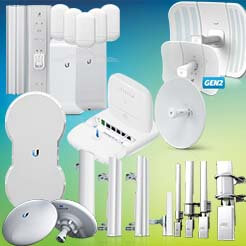
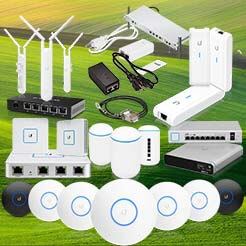
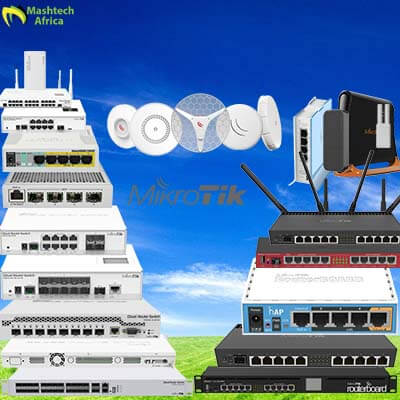

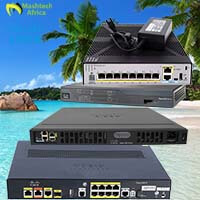
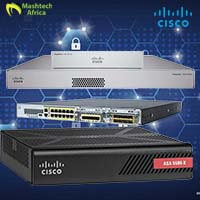
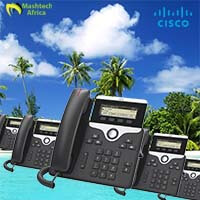
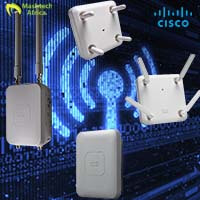
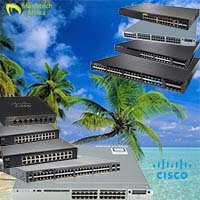
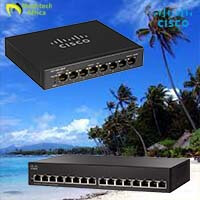
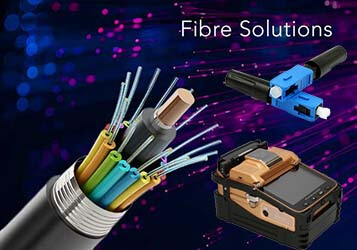
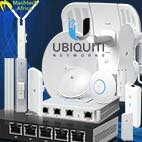
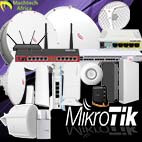
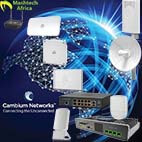
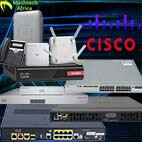
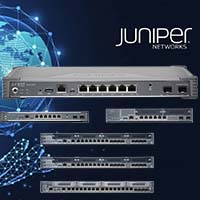
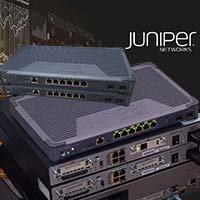







There are no reviews yet.